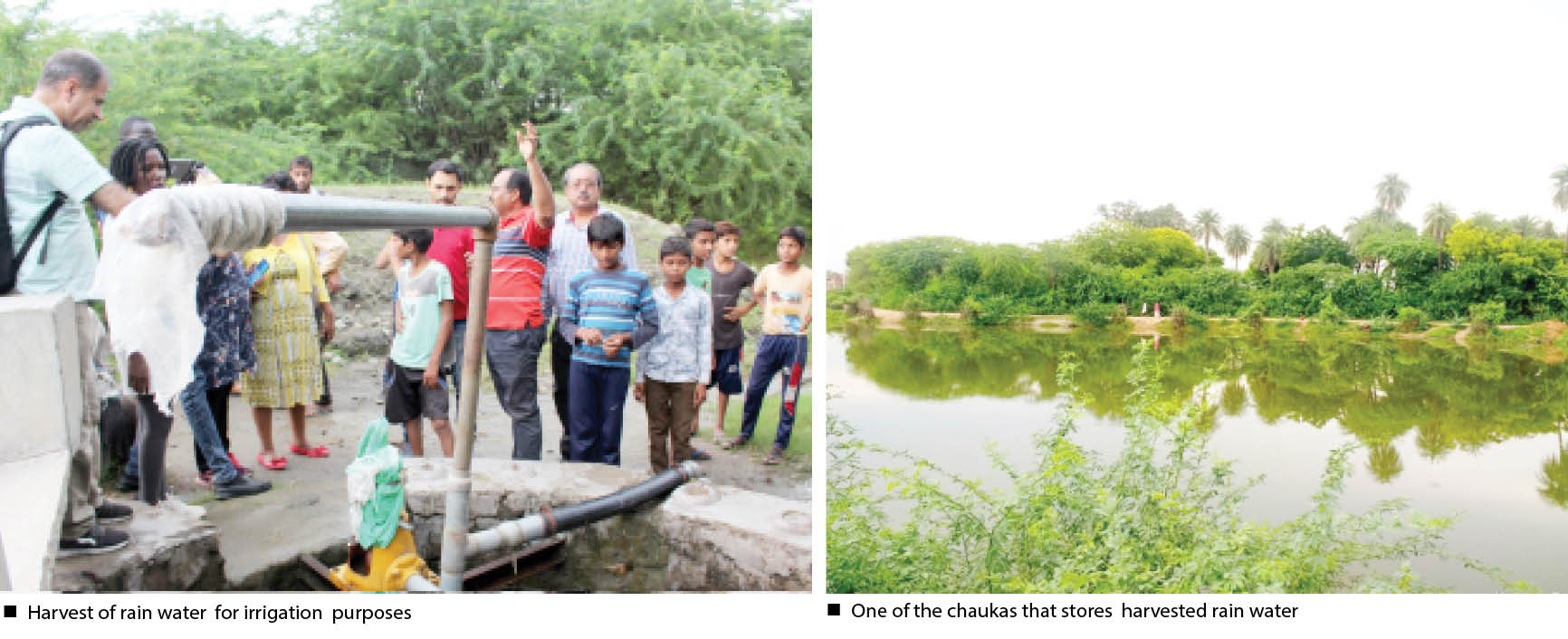How India’s irrigation model can recharge Nigeria’s arid lands
Northern Nigeria is threatened by desertification, drought and the drying up of lakes across the region coupled with decrease in the amount of rainfall in most areas. This is responsible for the migration down south of many cattle breeders who rely on rain-fed forage for their animals. This massive migration is responsible for the deadly […]

Northern Nigeria is threatened by desertification, drought and the drying up of lakes across the region coupled with decrease in the amount of rainfall in most areas.
This is responsible for the migration down south of many cattle breeders who rely on rain-fed forage for their animals.
This massive migration is responsible for the deadly onslaught and killings between cattle breeders and sedentary farmers in parts of the north, central and southern Nigeria.
This situation is similar to that of the India village of Laporiya, 90km from Jaipur, the capital city of the state of Rajasthan, which is a semi-arid region affected by desertification. Just like most northern fridges of Nigeria.
Desertification is today the greatest threat to mankind living in the global south countries – Asia, Africa and parts of Latin America.
While many countries are fighting desertification holistically, Nigeria’s response to the fast-encroaching desert in the north is very slow; even the Great Green Wall project is in limbo.
But the Indian village of Laporiya’s approach to fighting these problems proves that local methods could solve many problems associated with drought, desertification and migration – something Nigerian communities need to learn from.
What Laporiya did
Many years ago, Laporiya, an agrarian community, was relentlessly hit by drought. Scarcity of water for the pastoralists and irrigation farmers became severe forcing thousands of farmers and their livestock to migrate to other parts of the state.
But one man, Laxman Singh decided to take the bull by the horn to resuscitate the village’s lost glory. He studied the flow of water using traditional conservation method.
He mobilized the youths in the community and dug chaukas (embankments) in the agriculture fields and pasture lands for rainwater harvesting as a means to recharge the underground water.
These chaukas hold rainwater, which is made available all the time for the farmers and pastoralists.
Where there is excess, water from these chaukas is channeled through canals to agricultural fields.
Today, that traditional system is a model for over 50 villages and it has helped to rejuvenate the drylands and make them agriculturally productive.
Today, Mr Singh is happy with what the Gram Vikas Navyuvak Mandal Laporiya has achieved. The land is now green, trees and grasses everywhere and the animals are fat as water and grasses are available all year round.
Lessons for Nigeria
With increasing desert encroachment speeded up by deforestation and climate change, there is serious need for rainwater harvesting to rejuvenate and conserve the environment.
This will slow and finally reverse the migration of herders from the north where there is massive land available for pastoral activities; and cut down the growing conflicts associated with competition for resource control – land, water, and fodder.
Even if the model might not work exactly here, it’s time for investments in teaching communities how to restore their land and preserve it for future generations and agro-economy purposes.
Desertification now a huge threat
This reporter who visited the villages during the Global South Media conference on Decortications in New Delhi and Rajasthan, found that these villages have succeeded in converting desert lands to fertile, arable lands – building embankments to harvest rainwater to make it available throughout the year.
The conference, which was organized by the Centre for Science and Environment (CSE) New Delhi, examined how desertification threatened agriculture and livelihoods in the country of the global south.
The event also coincided with the 14th Conference of Parties (CoP) of the United Nations Convention to Combat Desertification (UNCCD) in Delhi.
But the Centre for Science and Environment (CSE) believed the outcome has diluted the role of international funding bodies in combating desertification. It has also sidestepped the contentious issue of tenurial rights to land.
“The finalised Declaration – ‘Investing in Land and Unlocking Opportunities’ – agreed to by the member parties has removed the mention of international financial institutions like Green Climate Fund (GCF), Global Environment Facility (GEF) and Adaptation Fund. These institutions had been specifically named in the draft which was being discussed among the parties.”
The experts also worried that the declaration has also removed the mention of “legal recognition” of tenurial rights. The issue of these rights was one of the most contentious discussed at the convention.
